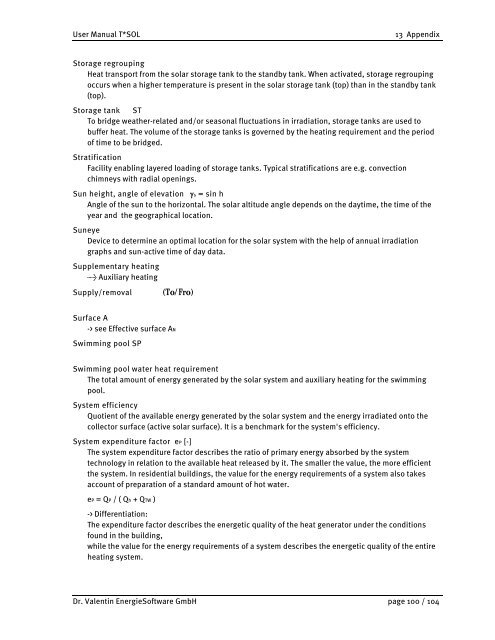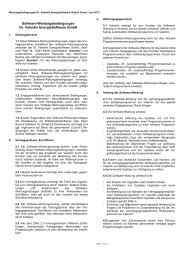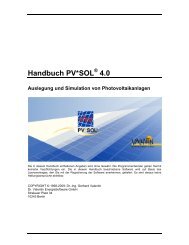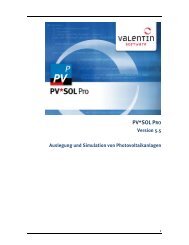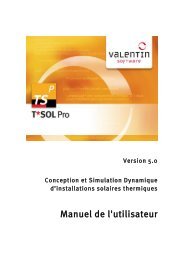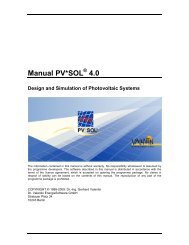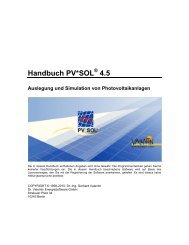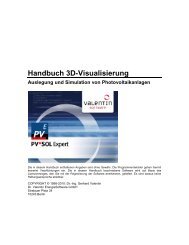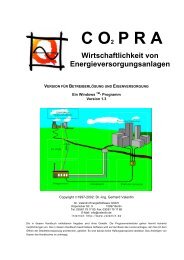Manual T*SOL basic 5.0 - Valentin Software
Manual T*SOL basic 5.0 - Valentin Software
Manual T*SOL basic 5.0 - Valentin Software
Create successful ePaper yourself
Turn your PDF publications into a flip-book with our unique Google optimized e-Paper software.
User <strong>Manual</strong> <strong>T*SOL</strong> 13 Appendix<br />
Storage regrouping<br />
Heat transport from the solar storage tank to the standby tank. When activated, storage regrouping<br />
occurs when a higher temperature is present in the solar storage tank (top) than in the standby tank<br />
(top).<br />
Storage tank ST<br />
To bridge weather-related and/or seasonal fluctuations in irradiation, storage tanks are used to<br />
buffer heat. The volume of the storage tanks is governed by the heating requirement and the period<br />
of time to be bridged.<br />
Stratification<br />
Facility enabling layered loading of storage tanks. Typical stratifications are e.g. convection<br />
chimneys with radial openings.<br />
Sun height, angle of elevation γs = sin h<br />
Angle of the sun to the horizontal. The solar altitude angle depends on the daytime, the time of the<br />
year and the geographical location.<br />
Suneye<br />
Device to determine an optimal location for the solar system with the help of annual irradiation<br />
graphs and sun-active time of day data.<br />
Supplementary heating<br />
→ Auxiliary heating<br />
Supply/removal (To/Fro)<br />
Surface A<br />
-> see Effective surface AN<br />
Swimming pool SP<br />
Swimming pool water heat requirement<br />
The total amount of energy generated by the solar system and auxiliary heating for the swimming<br />
pool.<br />
System efficiency<br />
Quotient of the available energy generated by the solar system and the energy irradiated onto the<br />
collector surface (active solar surface). It is a benchmark for the system's efficiency.<br />
System expenditure factor eP [-]<br />
The system expenditure factor describes the ratio of primary energy absorbed by the system<br />
technology in relation to the available heat released by it. The smaller the value, the more efficient<br />
the system. In residential buildings, the value for the energy requirements of a system also takes<br />
account of preparation of a standard amount of hot water.<br />
eP = QP / ( Qh + QTW )<br />
-> Differentiation:<br />
The expenditure factor describes the energetic quality of the heat generator under the conditions<br />
found in the building,<br />
while the value for the energy requirements of a system describes the energetic quality of the entire<br />
heating system.<br />
Dr. <strong>Valentin</strong> Energie<strong>Software</strong> GmbH page 100 / 104


